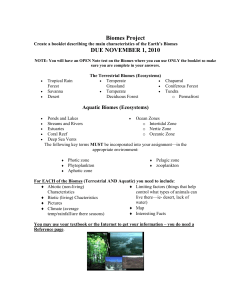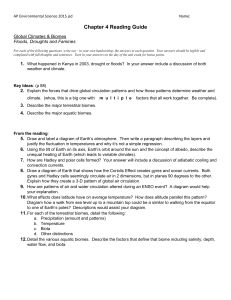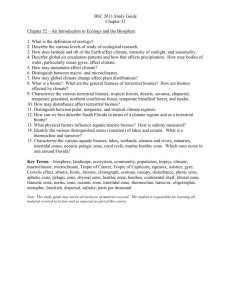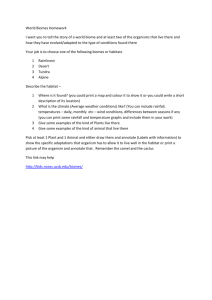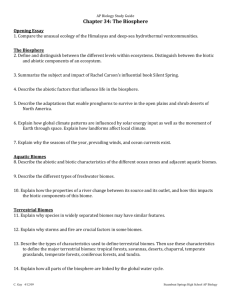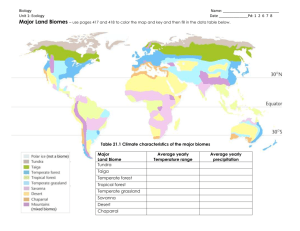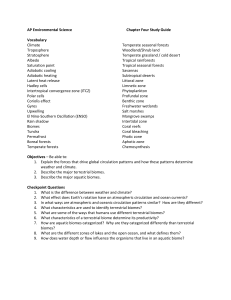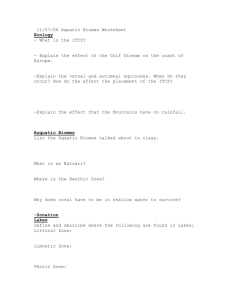The Biosphere and Human Impacts Ch 47-48 Objectives
advertisement
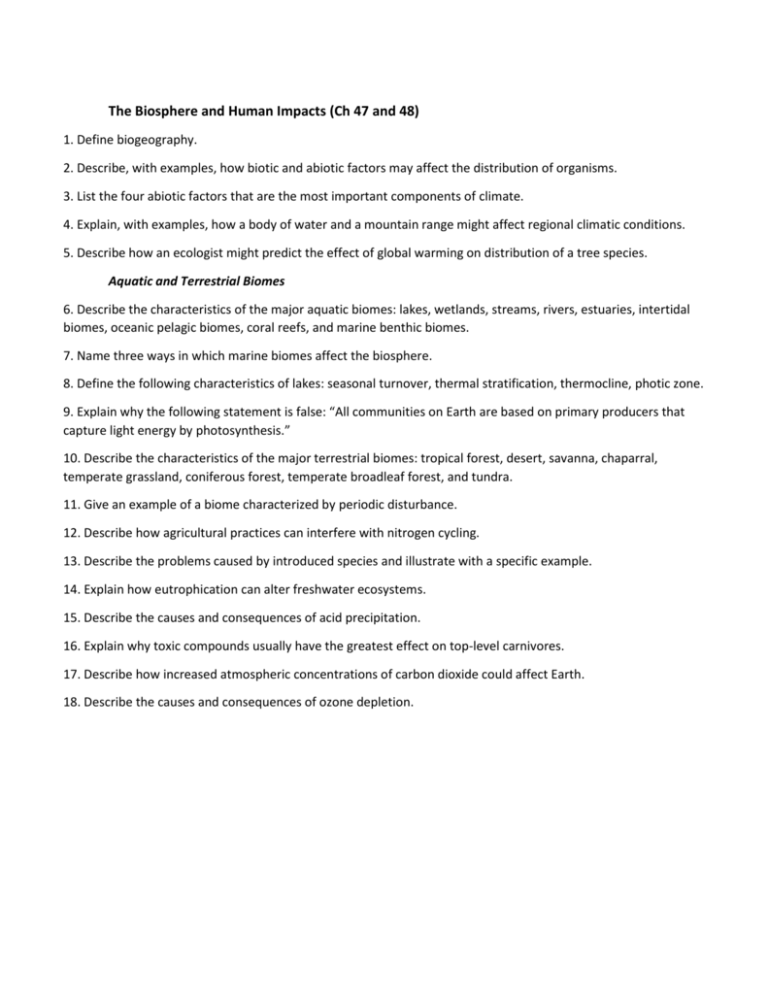
The Biosphere and Human Impacts (Ch 47 and 48) 1. Define biogeography. 2. Describe, with examples, how biotic and abiotic factors may affect the distribution of organisms. 3. List the four abiotic factors that are the most important components of climate. 4. Explain, with examples, how a body of water and a mountain range might affect regional climatic conditions. 5. Describe how an ecologist might predict the effect of global warming on distribution of a tree species. Aquatic and Terrestrial Biomes 6. Describe the characteristics of the major aquatic biomes: lakes, wetlands, streams, rivers, estuaries, intertidal biomes, oceanic pelagic biomes, coral reefs, and marine benthic biomes. 7. Name three ways in which marine biomes affect the biosphere. 8. Define the following characteristics of lakes: seasonal turnover, thermal stratification, thermocline, photic zone. 9. Explain why the following statement is false: “All communities on Earth are based on primary producers that capture light energy by photosynthesis.” 10. Describe the characteristics of the major terrestrial biomes: tropical forest, desert, savanna, chaparral, temperate grassland, coniferous forest, temperate broadleaf forest, and tundra. 11. Give an example of a biome characterized by periodic disturbance. 12. Describe how agricultural practices can interfere with nitrogen cycling. 13. Describe the problems caused by introduced species and illustrate with a specific example. 14. Explain how eutrophication can alter freshwater ecosystems. 15. Describe the causes and consequences of acid precipitation. 16. Explain why toxic compounds usually have the greatest effect on top-level carnivores. 17. Describe how increased atmospheric concentrations of carbon dioxide could affect Earth. 18. Describe the causes and consequences of ozone depletion.
